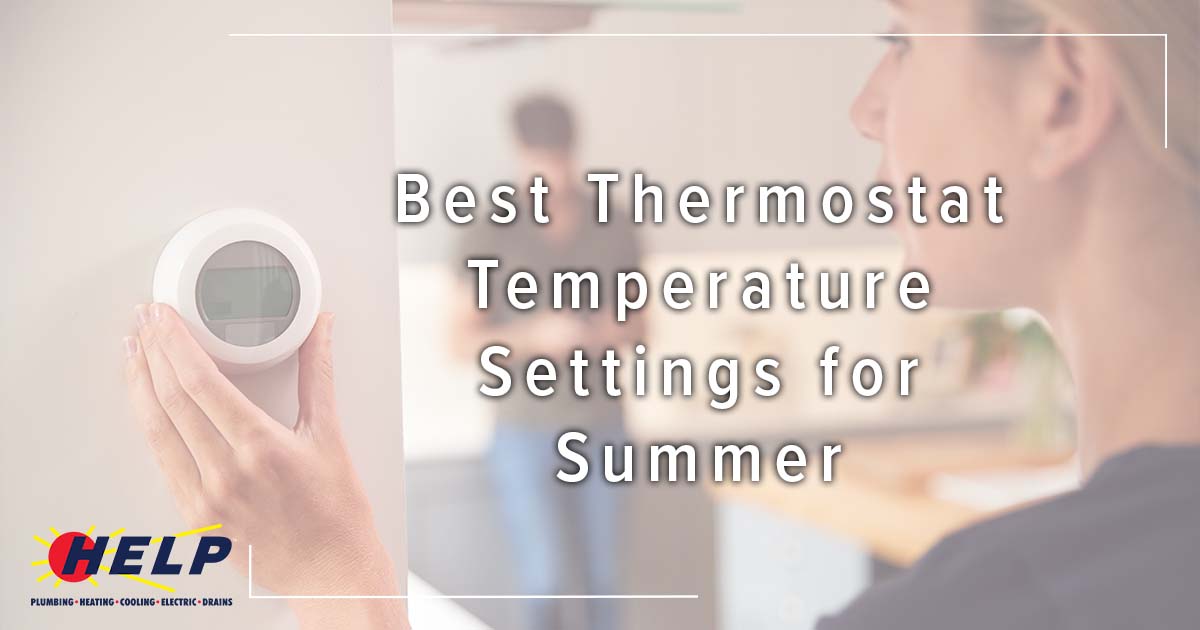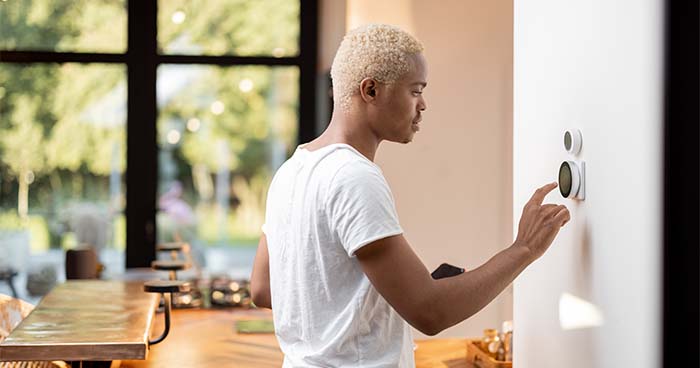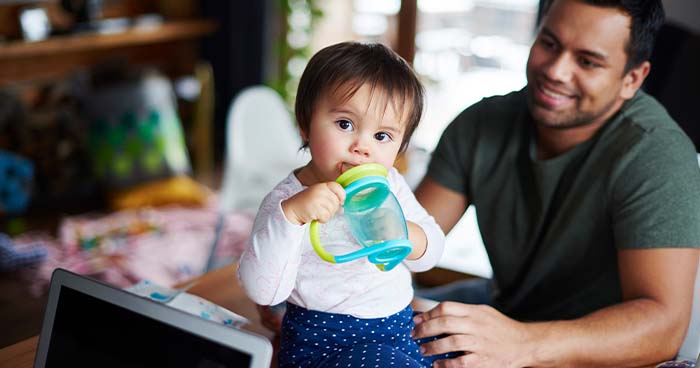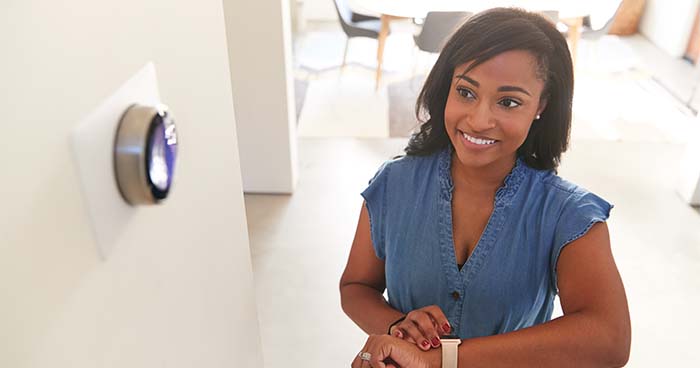
Having air conditioning is a luxury for your home, especially in hot, humid climates. But staying comfortable shouldn’t come with unreasonably high energy bills.
No one wants to be overheated in their home in the summer, but you can find the right balance between comfort and practicality with the best thermostat setting. The best thermostat temperature settings for summer ensures that your household stays cool and content without skyrocketing your energy bills and wearing out your AC unit.

Yes, the Best Temperature Setting is 78°
Both winter and summer have ideal temperature settings for maximum comfort and efficiency. In winter, that temperature is 68°F. In summer, it’s 78°F. This is enough to make a difference between the heat outside and the comfort inside, but not so high that your AC works overtime and you’re paying an arm and a leg for electricity.
While you’re working toward that, you can further reduce your energy usage by lowering the thermostat each night before bed. When we sleep, our body temperature drops and we tend to be cooler. This means you can keep your house a bit warmer without anyone getting uncomfortable.
You can also adjust the temperature during the day while you’re running errands or at work. This gives your AC a break, and no one is home to worry about being uncomfortable.

That said, if you have pets like dogs or cats, it’s important that you keep the temperature safe for them. Most household pets need temperatures lower than 82°F to prevent overheating.
How to Regulate Your Own Body Temperature
You invested in an AC to stay cool in the summer, so the last thing you want is to still feel hot and sweaty inside your home. But having exorbitant electric bills isn’t fun, either.
- Use ceiling fans to circulate the air
- Avoid cooking with your oven during the day
- Invest in window treatments that reflect sunlight
- Take a cool shower before going to bed
Stay Hydrated
It’s important that you stay hydrated when you’re outside in the heat and sweating. Dehydration can happen fast in these conditions, and aside from being dangerous, it can make you feel much hotter than you are.

When you sweat, you’re losing a lot of fluids. If you’re not drinking enough water, this can lead to dehydration. Be sure to drink plenty of water and sports drinks in the summer, especially if you’re outside doing yard work or playing with the kids.
Dress for Summer
Dressing appropriately for the heat is an important part of staying cool. Tank tops, tee shirts, and shorts leave a lot of skin exposed, so they can actually make you feel warmer. Bare skin is also susceptible to UV damage from the sun.

When it’s hot and humid, opt for loose-fitting clothing like pants and tees. These allow your body to ventilate heat and cool you off. You should also choose fabrics from natural fibers like linen and cotton, which are more breathable.
Babies Need to be Kept Cooler
If you have a baby at home, it’s important to keep the right temperature for their safety. Babies don’t have the ability to regulate their own body temperature, so they can get too cold or too hot easily. In fact, this puts them at risk for sudden infant death syndrome (SIDS).
Ideally, a baby should have temperatures no lower than 65°F and no higher than 74°F. They don’t have the ability to release body heat like adults do, and they don’t have fat reserves and insulation to stay warm in the cold.
Regulate Home Temperatures with a Smart or Programmable Thermostat
Maintaining the ideal temperature will go a long way toward saving on your energy bills but messing with the thermostat can be a hassle.
A smart thermostat takes the effort and guesswork out of the equation. You can program your thermostat to optimize your home’s temperature at all times. When you leave for work, the thermostat will automatically raise the temperature to reduce the load on your AC and lower your energy use. Then, when you’re coming home, you can set it to cool down just a half hour before you arrive.

You can also connect your thermostat to your smartphone or other device to monitor and adjust the temperature on your own, remotely.
Looking for upgrades for your home’s HVAC? Contact the pros at HELP!


